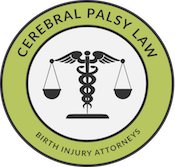The Relationship between HIE and ADHD | New Research
A study by the Kaiser Permanente Foundation shows that oxygen deprivation prior to birth puts children at a higher risk for Attention Deficit Hyperactivity Disorder (ADHD). Specifically, the study states that children who experienced ischemic-hypoxic conditions (lack of oxygen and blood to the brain), ran the highest risk. There are different forms of ischemic-hypoxic conditions such as birth asphyxia, preeclampsia (high blood pressure during pregnancy), and neonatal respiratory distress syndrome. This study looked at 82,000 medical records of children ages 5-11 and found: 
- Birth asphyxia was associated with a 26% greater risk of developing ADHD.
- Neonatal respiratory distress syndrome was associated with a 47% greater risk
- Preeclampsia was associated with a 34% greater risk.
- The connection between ischemic-hypoxic conditions and ADHD were strongest in the premature deliveries and certain birth injury cases [e.g. breech birth, transverse (shoulder first), cord issues]. In fact breech, transverse and umbilical cord problems increase the chance of ADHD by 13%.
The implications of this research
Early detection and quicker treatment has been found to be more effective in treating ADHD. This study can help doctors identify the newborns most at-risk for ADHD based on ischemic-hypoxic incidents and risk factors and begin treatment sooner.
Negligence may have played a role in your child’s ADHD and other disabilities
ADHD is not the only disability caused by hypoxic-ischemic conditions. Cerebral palsy, mental retardation and a variety of other physical, mental and cognitive disabilities are also related. Many are preventable and are due to the negligence of obstetricians, nurses and other medical professionals. If your child was diagnosed with ADHD and other disabilities, it’s important to have his or her medical records reviewed by a qualified birth injury attorney to determine if the injury was the fault of someone else.
